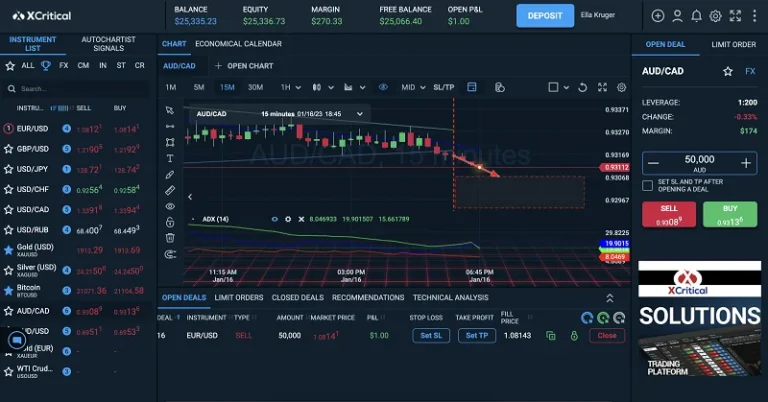The network attempts to maintain a constant block time (the time between each block); Ethereum is mined each ~14 seconds and Bitcoin is mined every ~10 minutes. The problem frequently adjusts after each block so the block instances stay relatively secure. In distributed methods, a consensus mechanism is the tactic by which the network agrees on a single source of reality. Unlike in centralized techniques, the place a source of reality is determined upon by a single controlling entity, distributed techniques rely on giant numbers of autonomous authorities to cooperate in the maintenance of a single network.
It differs from proof-of-work considerably, mainly in the reality that it incentivizes sincere conduct by rewarding those that put their crypto up as collateral for a chance to earn extra. Using this widespread history, they assess whether new blocks of transactions are legitimate. So, a blockchain is a digital ledger of distributed, decentralized, and often https://www.xcritical.com/ public transactions. Each transaction on a blockchain is recorded as a ‘block’ of data and must be verified by peer-to-peer laptop networks before being added to the chain. This system helps safe the blockchain against fraudulent activity and double-spending.
Pos Consensus Mechanism
An entity with sturdy funds can corner token markets, permitting them to collect a majority of tokens. Validators who have interaction within the proof-of-stake model only should spend cash as soon as to participate – they must purchase tokens to win blocks within the proof-of-stake model. A miner in a proof-of-work system, however, should buy mining tools and maintain it working indefinitely, incurring variable vitality expenses. The most legitimate criticism of the bitcoin network’s resource use is digital waste.
Conversely, validators who don’t perform their duties––if they’re offline, for example––receive penalties, or slashes, in the type of small amounts of ETH subtracted from their stakes. In order to turn into a validator on Ethereum 2.zero, validators will deposit 32 ETH into the official Ethereum 2.0 deposit contract, which has been developed and released by the Ethereum Foundation. Validators might want to stake 32 ETH for every validator node they wish to run. In 2020, the first phase of Ethereum 2.0 will go stay, marking an overhaul of the existing Ethereum 1.0 blockchain and notable improvements in scalability and accessibility.

Proof of Stake would be the consensus mechanism that Ethereum 2.zero makes use of to maintain up the community. Unlike Proof of Work networks, Proof of Stake networks can obtain finality. Their solution was to create a very new ETH2 blockchain, which went stay in December 2020 and is expected to be completed in 2022. Proof of stake, a speedier and fewer resource-intensive consensus technique, might be used in the up to date model of Ethereum.
Proof Of Stake Vs Proof Of Work
Also in each slot, a committee of validators is randomly chosen, whose votes are used to determine the validity of the block being proposed. Dividing the validator arrange into committees is essential for preserving the community load manageable. Committees divide up the validator set so that every energetic validator attests in each epoch, however not in each slot. Proof-of-stake is a approach to show that validators have put something of worth into the network that can be destroyed in the event that they act dishonestly. In Ethereum’s proof-of-stake, validators explicitly stake capital within the form of ETH into a wise contract on Ethereum. The validator is then answerable for checking that new blocks propagated over the community are legitimate and sometimes creating and propagating new blocks themselves.
As a outcome, Kazakhstan, together with Iran and the United States, has become a mining hotspot. PoS chains remove the infinite race that usually forces miners to compute the identical transaction while only one wins. This results in considerably less power utilization, as validator choice is based on the worth of staked belongings. Both approaches entitle stakers to receive a portion of rewards earned by the validator. Moreover, specific implementations, corresponding to delegated proof-of-stake (DPoS), select validators for brand spanking new blocks based on the variety of cash community members stake to the validator’s node. Bitcoin’s creation launched the world to the immense benefits internet-based communities might unlock by way of a distributed ledger.
What Is Proof Of Stake?
Bake provides no waiting occasions, aggressive yields, and auto-compounding, serving to you earn rewards in your staked ETH rapidly and effectively. Taking Staking Rewards’ annual proportion rate (APR) estimate is 4.54% (accurate as of 14 Sep 23). This means a validator who stakes 32 ETH (worth about $51,849.60 on the time of writing) can expect to earn around 1.45 ETH per year before deducting any fees or prices. PoW once offered a high stage of security and decentralization for the Ethereum network, making it very troublesome and expensive for bad actors to assault or manipulate the blockchain.

It is utilized by both Bitcoin and Ether, the 2 most well-known cryptocurrencies. However, as a half of its development technique, Ethereum, Ether’s underlying protocol, goals to change to the proof of stake (PoS) algorithm. This might be a big endeavor, and crypto followers are anxiously debating the POW vs. PoS debate. For instance, Ethereum implements “slashing,” a characteristic that enables sincere validators to vote in opposition what is proof of stake to such malicious transactions and burn the ETH staked by the dishonest actor. This measure disincentivizes unhealthy actors, who can simply begin incomes by performing in the network’s best interests. PoS replaces miners with validators, thus eliminating the want to expend electrical energy or set up application-specific integrated circuit (ASIC) machines to verify and create new blocks.
For instance, validators incur penalties in the event that they fail to identify the pinnacle of the chain on time (the most recent block to be added to the blockchain) or if they double-sign transactions. On September fifteenth, 2022, Ethereum, the second-largest cryptocurrency by market capitalisation and the primary smart contract blockchain, underwent a historic transformation. The improve marked a transition from the energy-intensive proof-of-work (PoW) to the eco-friendly proof-of-stake (PoS) consensus mechanism. PoS chains provide larger power effectivity and scalability features that account for its extensive adoption with the cryptocurrency system. But if there isn’t sufficient validator diversity, the protocol can undergo from censorship, safety and slashing risks.
There’s no central gatekeeper to handle a blockchain’s report of transactions and knowledge. Instead, the network depends on a military of members to validate incoming transactions and add them as new blocks on the chain. Where PoW requires miners to place in the work to increase the blockchain, proof-of-stake (PoS) adopts an entirely different tack. PoS requires validators to stake their ETH to create new blocks and validate transactions instead. The Proof of Work (PoW) consensus mechanism is at present probably the most widely-used consensus mechanism and arguably one of the best understood. Pioneered by Satoshi Nakamoto with the release of Bitcoin in 2008, PoW has thus far powered the vast majority of highest-profile blockchains, together with Ethereum.
- There is a robust argument for classifying many of those tokens as commodities – as lengthy as they are correctly decentralized and protocol staking dangers are minimized.
- However, the market economy has a built-in security valve for this, as a result of when someone tries to purchase numerous cash, the worth of the coin will skyrocket, making the attackers’ work rather more troublesome.
- The risk of a 51% attack(opens in a new tab) nonetheless exists on proof-of-stake as it does on proof-of-work, but it’s even riskier for the attackers.
- Their solution was to create a completely new ETH2 blockchain, which went live in December 2020 and is expected to be completed in 2022.
- Bitcoin’s creation introduced the world to the immense advantages internet-based communities may unlock by way of a distributed ledger.
Other crypto mining issues embrace censorship and traceability, which have already occurred in locations like China, where cryptocurrency mining has been banned. Electricity readings and even thermal cameras may be used to locate the large energy use. Anti-crypto regimes can use the power to track the place crypto mining takes place to crack down on the apply.
This incentivizes validators to act in good faith to learn the cryptocurrency and the community. A validator checks transactions, verifies exercise, votes on outcomes, and maintains information. Miners work to unravel for the hash, a cryptographic number, to verify transactions. Different proof-of-stake mechanisms might use varied strategies to succeed in a consensus. Proof of Stake (PoS) is a sort of consensus mechanism that’s used to secure blockchain networks.
In Ethereum 2.0, the PoS consensus mechanism will require validators to stake 32 ETH to run a validator node on the community. Each time a block is set to be proposed, a minimum of 4 and as much as sixty four random committees of 128 validator nodes will be selected from the complete pool of validators to attest the block. Proof of Stake is a special type of consensus mechanism blockchains can use to agree upon a single true record of data history. Whereas in PoW miners expend vitality (electricity) to mine blocks into existence, in PoS validators commit stake to attest (or ‘validate’) blocks into existence. The PoS mechanism seeks to solve these problems by effectively substituting staking for computational energy, whereby the network randomizes an individual’s mining capability. This means there must be a drastic discount in vitality consumption since miners can now not depend on massive farms of single-purpose hardware to achieve an advantage.
Proof-of-Stake (POS) uses randomly selected validators to confirm transactions and create new blocks. Proof-of-Work (POW) makes use of a competitive validation methodology to confirm transactions and add new blocks to the blockchain. Under Ethereum’s PoS, if a 51% attack occurred, the sincere validators in the network may vote to disregard the altered blockchain and burn the offender(s) staked ETH.
And as many conversant in consensus mechanism wars know, there are more considerations and trade-offs that critics argue limit its capability to offer security and censorship resistance at scale. The major improvement of Phase 1 is the integration of shard chains to enhance scalability. Staking-as-a-service instruments with offload the technical efforts of working one own’s validator node by allowing a person with 32 ETH to pick which consumer they wish to use to remotely run a node and stake their funds. “This is the place a nice deal of innovation is occurring today, and certainly a challenge that blockchains will have to overcome if they are ever to turn into broadly used on a worldwide scale,” he says.
For PoW, miners should put money into processing tools and incur hefty vitality charges to energy the machines trying to solve the computations. At the time of writing, staked ETH and staking rewards are yet to be unlocked. Moreover, we’re yet to see the implementation of some main new scalability options, such as sharding.
